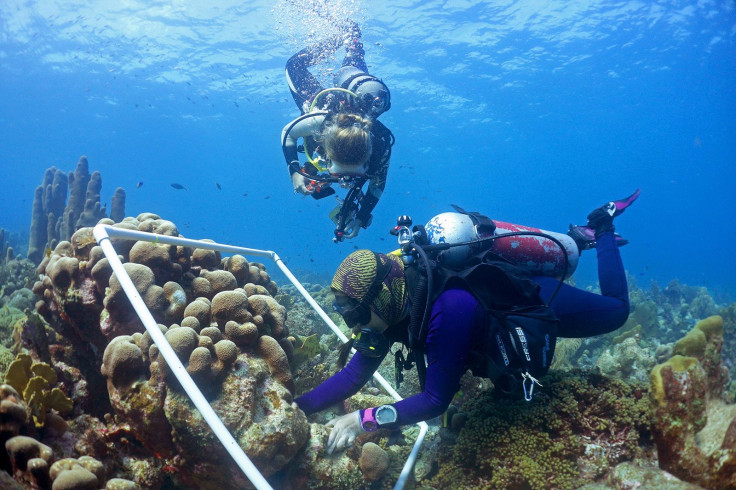'Sowing' Corals Onto Degraded Reefs Could Help Large-Scale Restoration

Coral reefs are integral ocean ecosystems that are in grave danger. Across the world, reef systems are facing danger of extinction with the number of threatened species rising every year. Climate change and pollution are seen as the major factors contributing to these colorful underwater forests dying out in our warming seas.
The troubling loss of coral reefs worldwide has prompted scientists and conservationists to assist the reefs’ recovery through active restoration approaches.
Restoring a single coral or a small reef system is not an easy process, each coral has to be placed manually on the ocean bed by divers and this process is painstakingly slow compared to the rate of their disappearance.
But, now a team of scientists have devised a method where corals can by sown into degraded reefs much like farmers scatter seeds on their fields.
"If we want restoration to play a more meaningful role in coral reef conservation, we need to think in new directions. Our sowing approach is an important step towards reaching this goal since it will allow the handling of large numbers of corals in a very short amount of time at significantly lower costs," said Dr. Dirk Petersen, project lead and Executive Director of SECORE International in a press release.
Their approach involves planting coral larvae on special substrates made specifically which can then be attached to the reef via natural processes. The coral then grows on the substrate for a few weeks. This substrate-coral grow patches are called "seeing units." They are then sown on the reef by simply placing them into spaces in the reef rather than manually attaching them onto an existing reef.
At present, transplanting for instance 10,000 individual corals on one hectare using common methods requires several hundred to a few thousand person-hours.
"Sowing the same number of corals could be achieved in less than 50 person-hours, a time saving of over 90 percent. Additionally, material costs could be reduced up to one third, representing a substantial advance for future restoration work," said SECORE’s Research Director Dr. Margaret Miller.
The team used larvae collected from colonies of golf ball corals (Favia fragum) in Curaçao. The team then placed it on tetrapod-shaped substrates made of cement on which the larvae grew. The team can even use sexually propagated corals to maintain a natural balance in genetic diversity instead of having the same kind of coral growing in patches.
This genetic diversity will also make the corals stronger to existing climatic conditions and the changes they will encounter in the future, much like in humans where the most genetically diverse offspring exhibits the strongest qualities.
The substrates were designed in such a way that the seedlings could be just slotted into existing crevices. The design of the substrates not only promotes the attachment on the reef, but is also intended to enhance the survival of the coral settlers.
"The different orientations of the Seeding Units’ surfaces and their integrated grooves create micro-habitats that likely reduce competition and predation affecting the young and very fragile corals compared to when larvae settle directly on the reef. This is crucial, as our results show that the early post-settlement life stage is the bottleneck for the survival of young corals," said Dirk Petersen.
Using 20-30 larvae on each substrate the team studied these seedlings for a year. They found that more than half of the units were recovered and still harbored at least one coral.
The team wants to further optimizer the substrate design which can be increase coral settler survival and growth.
"If we are able to combine our new sowing approach with more effective coral larvae rearing techniques, which we are developing right now, costs of reef restoration could become comparable to the costs of existing mangrove and salt marsh restoration efforts," Peterson added in the release.
© Copyright IBTimes 2025. All rights reserved.





















